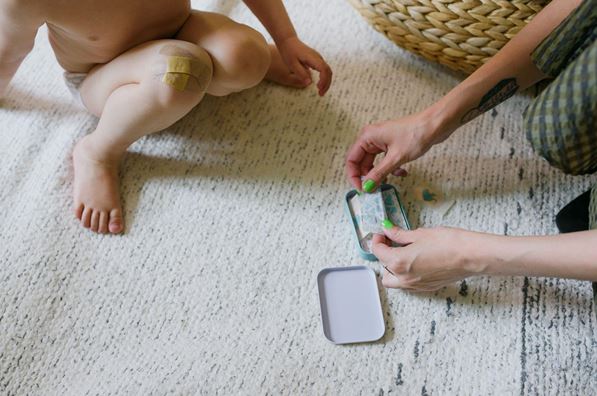Children are naturally curious and adventurous, which is a beautiful thing. However, their zest for life can sometimes result in minor injuries. As parents, it’s important to be prepared for these incidents.
From minor cuts and scrapes to more significant bumps and bruises, here are some first aid essentials and tips on handling common childhood injuries.
1. Cuts And Scrapes
Almost every child will come home with a cut or scrape at some point. For minor wounds, cleaning them is essential to prevent infection.
- Clean the Area: Gently wash the wound with soap and water to remove any debris.
- Apply Antiseptic: Use an antiseptic ointment to keep the area clean.
- Bandage: Depending on the size of the wound, you might need a bandage to cover it. Remember, not all wounds need to be covered, but it can be beneficial if the child might get the area dirty again.
- Seek Expert Help if Needed: If the wound seems deep or isn’t healing properly, it’s essential to seek professional help. Mobile wound care experts, for instance, can provide specialized care and advice, ensuring your child’s wound heals in the best possible way.
2. Bruises And Swelling
Children often get bruises from minor falls or bumps. While they usually aren’t cause for concern, it’s essential to know how to alleviate the pain and swelling. You can also check out First Aid Course Cumbria for more great options.
- Cold Compress: As soon as you notice a bruise or swelling, apply a cold compress. This helps reduce pain and inflammation.
- Elevate: If the bruise is on a limb, elevate it to minimize swelling.
- Monitor: If the swelling doesn’t reduce or if the bruise seems unusual, it might be worth consulting a doctor.
3. Burns
From hot surfaces to heated foods, burns can be a common household injury.
- Cool Water: Immediately run cool (not cold) water over the burn for at least 10 minutes or until the pain subsides.
- Protect: Cover the burn with a sterile non-adhesive bandage.
- Avoid Popping Blisters: Blisters may form on burns. They act as a protective layer, so avoid popping them.
Seek Medical Attention: For severe burns or burns on the face, hands, or genitals, seek medical help immediately.
4. Foreign Objects In Nose Or Ear
Kids are notoriously experimental, and sometimes, small objects find their way into noses or ears.
- Stay Calm: Panicking will only distress your child more. Keep calm and try to keep your child calm too.
- Don’t Use Tweezers: You might push the object further in. Instead, try tilting the child’s head to the side to see if gravity helps.
- See a Doctor: If the object doesn’t come out easily or if you’re concerned, see a doctor. They have specialized tools to handle such situations.
5. Choking
A terrifying experience for any parent, knowing what to do when a child is choking is crucial.
- Back Blows: For babies under one, give up to five back blows between their shoulder blades with the heel of your hand.
- Chest Thrusts: If the child is over one, you can give up to five chest thrusts.
- Call for Help: If the object doesn’t come out, call for emergency help immediately.
6. Sprains And Strains
Kids love to run and play, but sometimes this can result in a sprain or strain.
- Rest and Ice: Encourage your child to rest the affected area and apply an ice pack to reduce swelling.
- Compression: Use a bandage to compress the area, but ensure it’s not too tight.
- Elevate: Raising the affected limb can help reduce swelling.
Conclusion
As parents, we want nothing more than to keep our children safe. While we can’t always prevent injuries, being prepared and knowing how to handle them can make a world of difference. Ensure you have a well-stocked first aid kit and consider taking a pediatric first aid course.
This will not only equip you with the skills to deal with common injuries but will also give you the confidence to act swiftly and calmly in emergencies.

